Salsa Verde
This post may contain affiliate links. Read my full disclosure policy.
Bursting with tanginess, smokiness, and a hint of fiery heat, this salsa verde elevates everything it touches, from crunchy chips to sizzling fajitas and beyond.
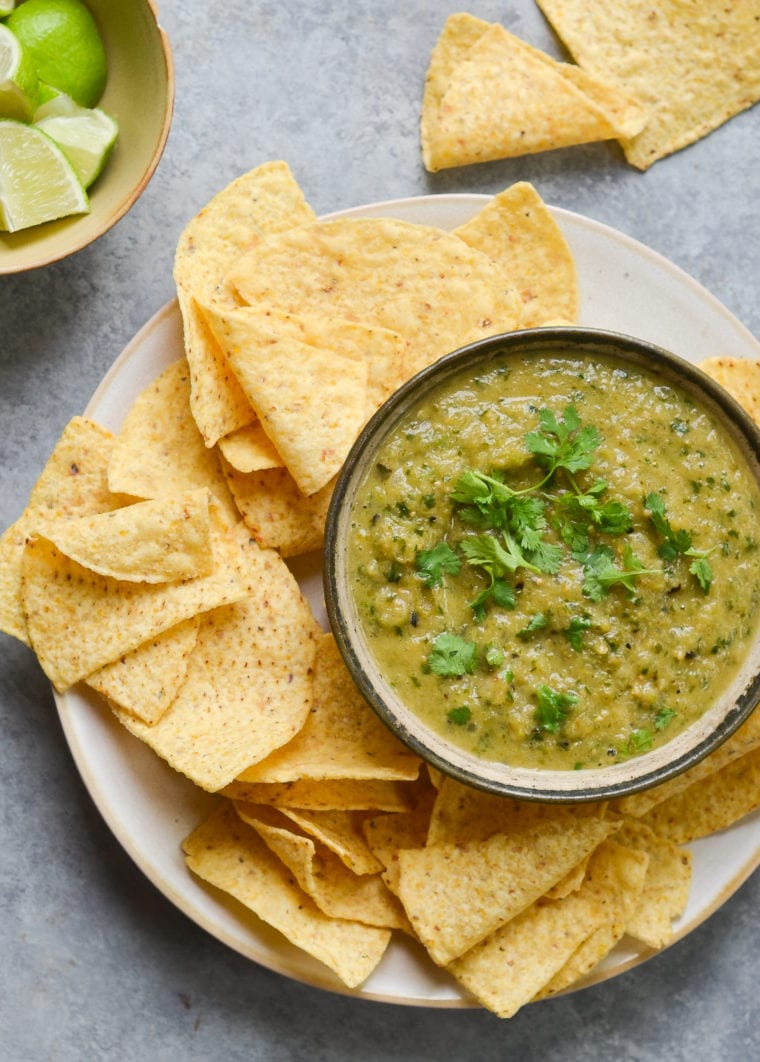
While traditional salsa features a tomato base, salsa verde—or green salsa— owes its vibrant hue and name to the predominant use of green ingredients. Its tangy and zesty flavor primarily comes from tomatillos, small green fruits known for their tartness, along with green chili peppers (such as jalapeños or serranos), cilantro, onions, garlic, and lime juice. The smoky undertone of salsa verde is often achieved by roasting these vegetables.
Beyond being the perfect companion for tortilla chips, salsa verde can be served with countless dishes. Use it as a sauce for enchiladas, quesadillas, or shrimp tacos, drizzle it over carne asada or chicken fajitas, or spoon it over cilantro lime rice. There’s truly no going wrong with this flavorful salsa!
Table of Contents
“I just made this to take to a friend’s for dinner tomorrow night. I am not sure it will make it there…I keep giving it another taste, and another and another…”
What You’ll Need To Make Salsa Verde
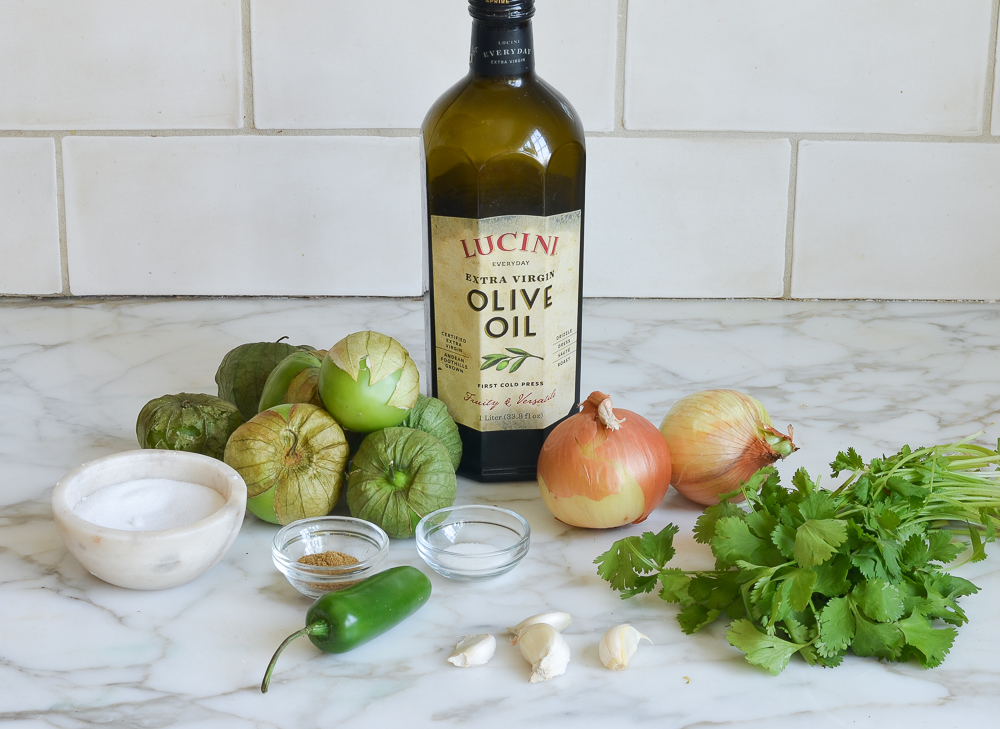
- Tomatillos: The base of the salsa, providing a unique, tangy flavor and a vibrant green color. Before using tomatillos, remove the papery husk. You’ll notice that they have a sticky substance on the surface — just rinse them under water and it will come right off.
- Onions and Garlic: These aromatics add depth and a foundational flavor layer.
- Jalapeño Pepper: Adds heat and fresh flavor.
- Olive Oil: Used for roasting the vegetables and tomatillos.
- Cumin: A spice that introduces warmth and earthiness.
- Cilantro: Brings a burst of herbal freshness and color.
- Jump to the printable recipe for precise measurements
Step-by-Step Instructions
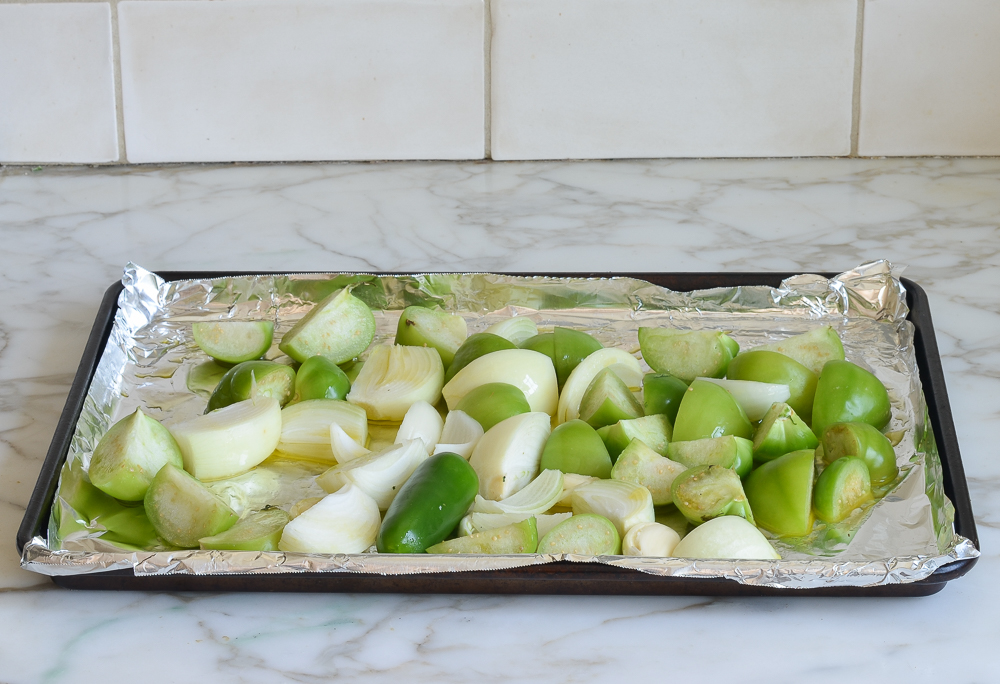
Place the tomatillos, onions, garlic, jalapeño pepper, and oil directly on the prepared baking sheet and toss with your hands or a rubber spatula. Broil until softened and charred, 10-12 minutes.
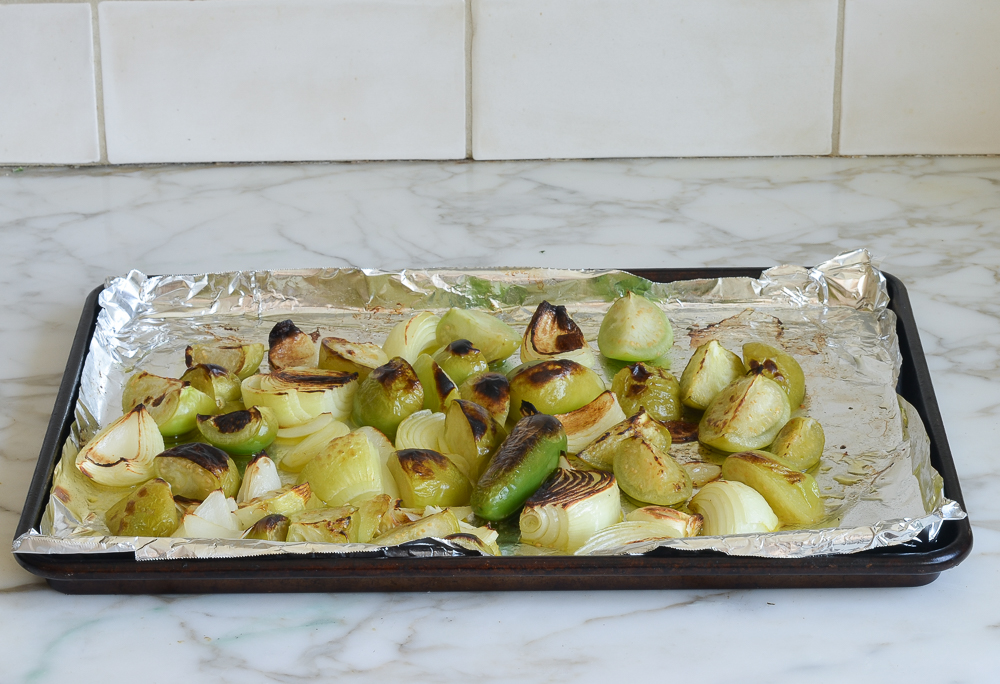
Transfer the vegetables and juices to a food processor fitted with the metal blade. Add the salt, cumin, sugar, and cilantro.
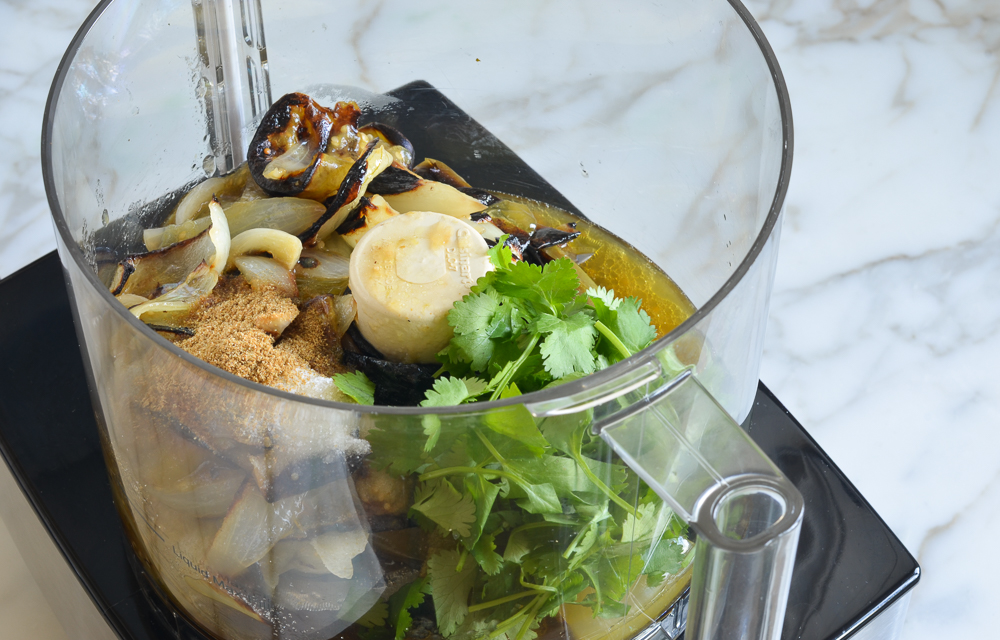
Pulse until chunky, then taste and adjust seasoning, if necessary.
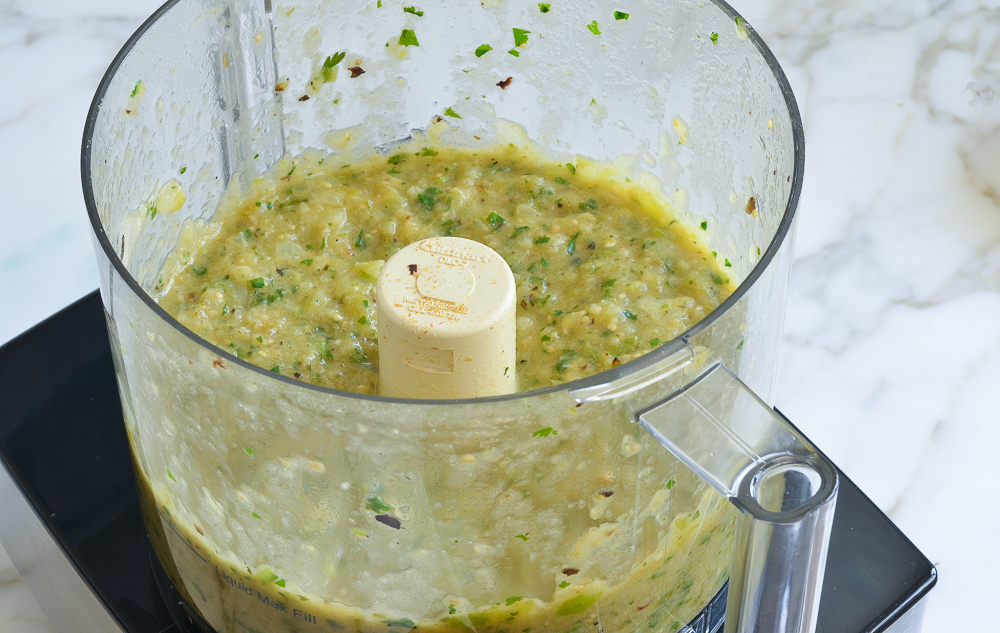
Transfer the salsa to a bowl and serve warm, at room temperature, or slightly chilled.
Video Tutorial
Frequently Asked Questions
The main ingredient in salsa verde, tomatillos are a tart Mexican fruit that resembles small green tomatoes covered by a papery husk. They’re related to tomatoes but have a distinctive tart flavor. (Note that they are not the same as green tomatoes, which are simply unripe tomatoes.) You can find tomatillos in most grocery stores. Select ones that are bright green, firm but not rock-hard, and bulging from their husks — and try to get tomatillos that are fairly uniform in size so that they roast evenly.
Yes, salsa verde can be made up to 3 days ahead of time and stored in a covered container in the refrigerator. It can also be frozen for up to 3 months. Thaw overnight in the refrigerator before serving.
The spiciness of salsa verde can be easily adjusted by modifying the amount of jalapeño pepper used. For a milder salsa, remove the seeds and ribs from the jalapeño before cooking, as most of the heat resides there. For a spicier salsa, include the seeds and ribs, or add additional peppers. You can also experiment with other types of chili peppers to find the level of heat that suits your taste.
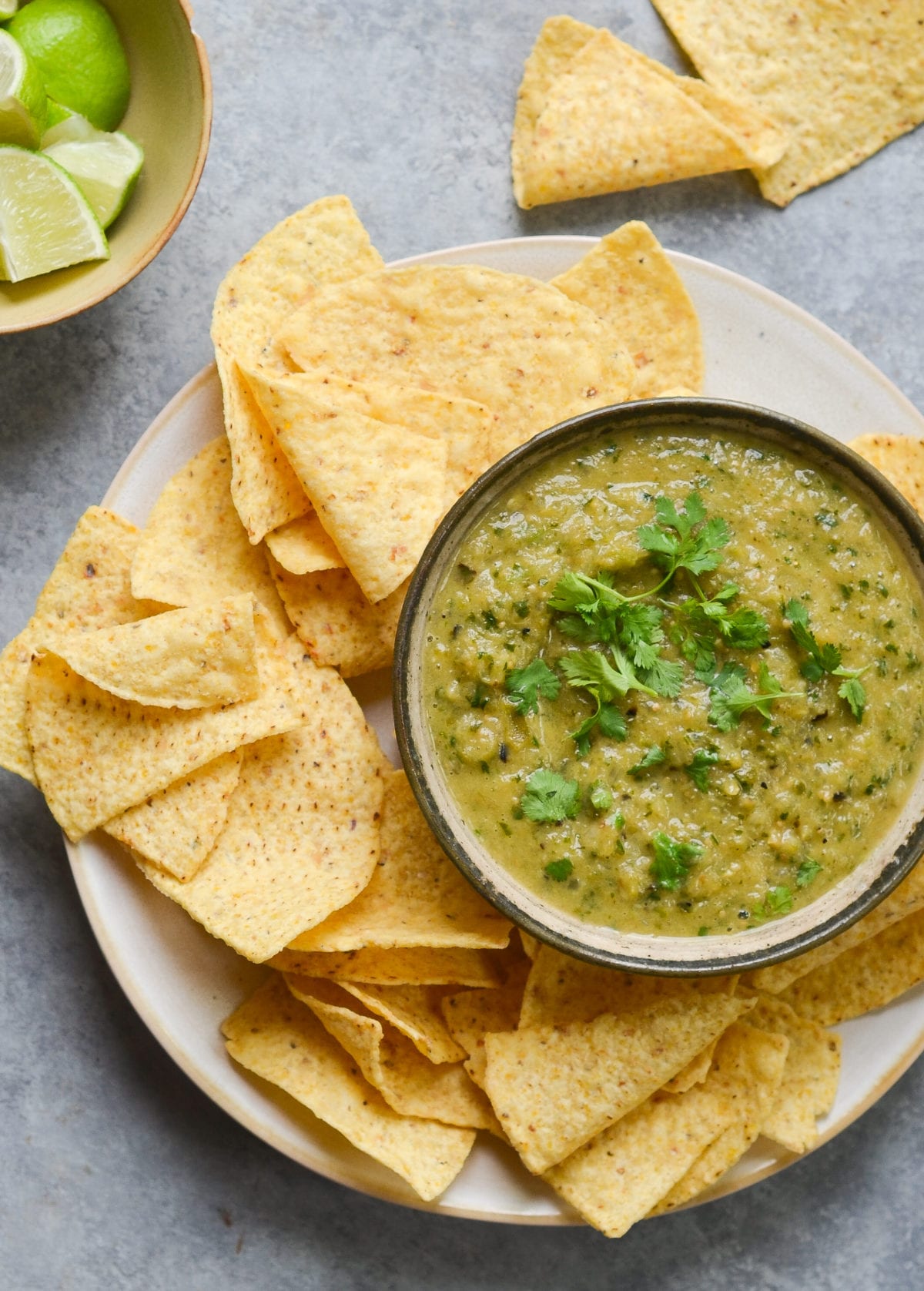
You May Also Like
Salsa Verde
Bursting with tanginess, smokiness, and a hint of fiery heat, this salsa verde elevates everything it touches, from crunchy chips to sizzling fajitas and beyond.
Ingredients
- 1¼ lbs tomatillos, husked, rinsed, and quartered
- 2 small yellow onions, cut into 1-inch wedges
- 4 cloves garlic, peeled
- 1 jalapeño pepper, left whole (or remove the ribs and seeds for a mild salsa)
- 3 tablespoons extra virgin olive oil
- 1 teaspoon salt
- 1 teaspoon ground cumin
- ⅛ teaspoon sugar
- ¾ cup packed fresh cilantro leaves, plus a bit more for serving
Instructions
- Set an oven rack about 5 inches beneath the heating element and preheat the broiler. Line a rimmed baking sheet with heavy-duty aluminum foil.
- Place the tomatillos, onions, garlic, jalapeño pepper and oil directly on the prepared baking sheet and toss with your hands or a rubber spatula. Broil until softened and slightly charred, 10-12 minutes.
- Transfer the vegetables and juices to a food processor fitted with the metal blade. Add the salt, cumin, sugar, and cilantro and pulse until chunky. Taste and adjust seasoning, if necessary. Transfer to a bowl and sprinkle with chopped cilantro if desired. Serve the salsa warm, at room temperature, or slightly chilled.
- Note: This recipe is not meant for canning.
- Make Ahead Instructions: The salsa can be made up to 3 days ahead of time and stored in a covered container in the refrigerator.
- Freezer-Friendly Instructions: The salsa can be frozen in an airtight for up to 3 months. Defrost in the refrigerator overnight before serving.
Nutrition Information
Powered by ![]()
- Per serving (12 servings)
- Serving size: 1/4 cup
- Calories: 53
- Fat: 4 g
- Saturated fat: 1 g
- Carbohydrates: 4 g
- Sugar: 2 g
- Fiber: 1 g
- Protein: 1 g
- Sodium: 153 mg
- Cholesterol: 0 mg
This website is written and produced for informational purposes only. I am not a certified nutritionist and the nutritional data on this site has not been evaluated or approved by a nutritionist or the Food and Drug Administration. Nutritional information is offered as a courtesy and should not be construed as a guarantee. The data is calculated through an online nutritional calculator, Edamam.com. Although I do my best to provide accurate nutritional information, these figures should be considered estimates only. Varying factors such as product types or brands purchased, natural fluctuations in fresh produce, and the way ingredients are processed change the effective nutritional information in any given recipe. Furthermore, different online calculators provide different results depending on their own nutrition fact sources and algorithms. To obtain the most accurate nutritional information in a given recipe, you should calculate the nutritional information with the actual ingredients used in your recipe, using your preferred nutrition calculator.

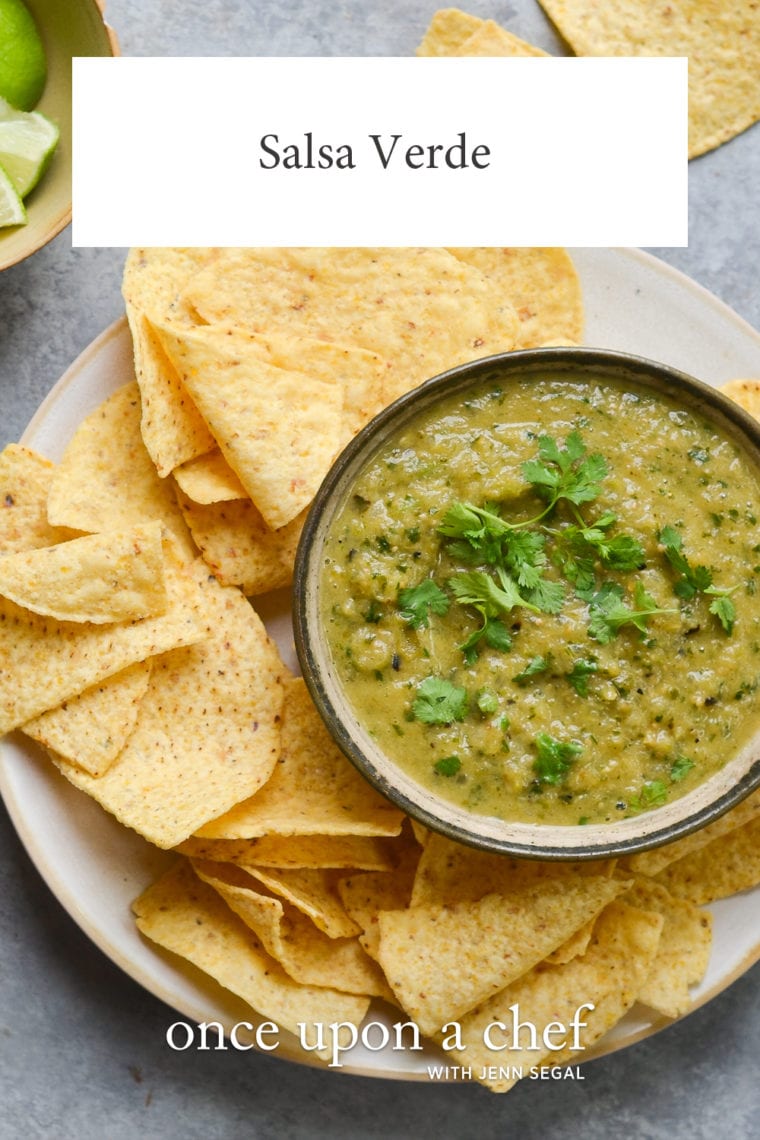

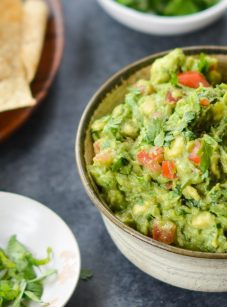
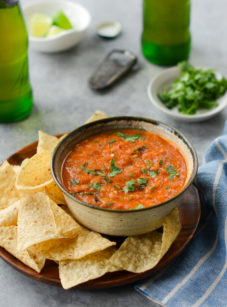

Fresh and delicious! Herbaceous and full of flavor. Made it for NYT Cooking salsa verde crockpot chicken. Served with cilantro rice. Will definitely save it and use again. Thank you!
Recipe was perfect as written. I’ve tried a few other salsa verde recipes that were hit and miss. I’ll be saving this one for the next time I get tomatillos in my crop share box.
Jenn,
I love your salsa verde recipe, it includes the statement that this is not meant for canning.
I have a pressure canner. Couldn’t I can the salsa with the same canning time as tomatoes?
Candace
Hi Candace, while it may be okay, I don’t know enough about canning to say whether or not it would be safe. Sorry!
Easy and delicious, such vibrant flavors! Didn’t have cilantro, so I subbed parsley and lime juice. Worked great.